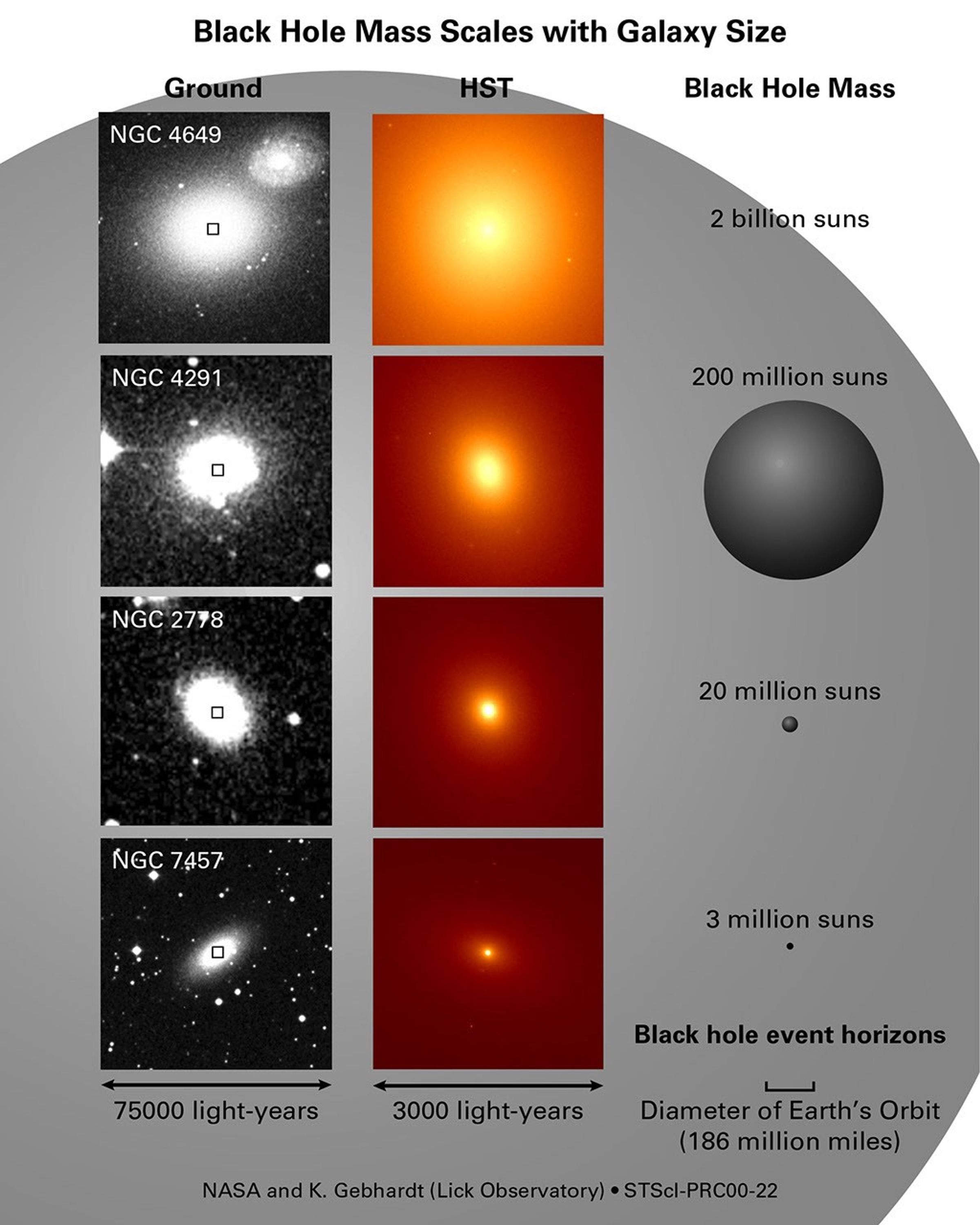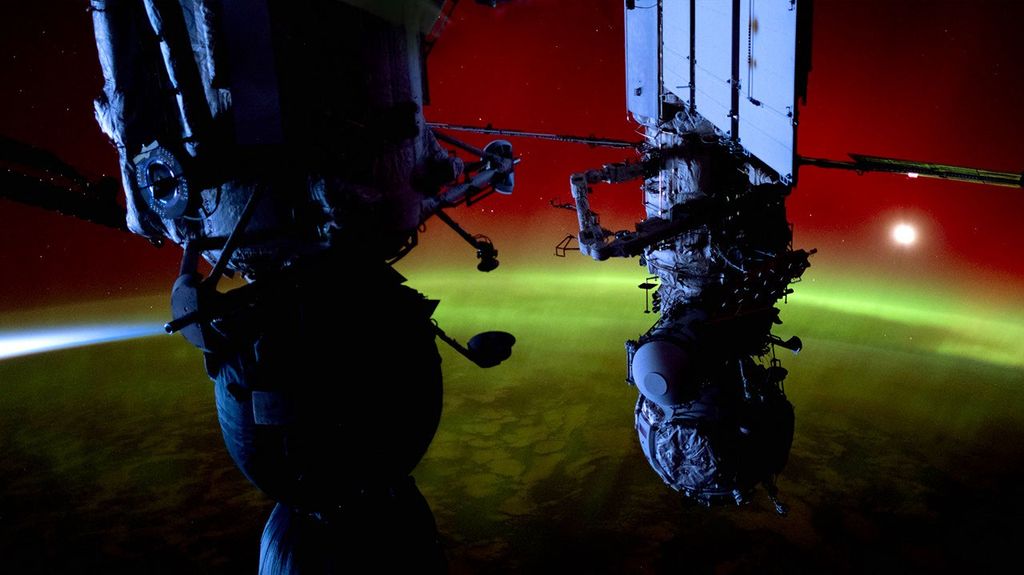1 min read
Black Holes: One Size Doesn’t Fit All

This comparison of the hearts of four elliptical galaxies shows that the more massive a galaxy's central bulge of stars, the heftier its black hole. The galaxies are part of a census of 30 galaxies conducted by astronomers using NASA's Hubble Space Telescope. Black holes are dense, compact objects possessing such strong gravitational forces that not even light can escape them.
The column of black-and-white pictures at left, taken by ground-based telescopes, shows the galaxies. The inset boxes define the central regions of stars. Close-up images of these regions, as seen by Hubble's Wide Field and Planetary Camera 2, are in the middle column. The column at right lists the masses of the black holes and illustrates the respective diameters of the event horizons. An event horizon defines a black hole's boundary. Any material that crosses that boundary becomes ensnared in a black hole's grasp and cannot escape. The event horizons cannot be seen in the Hubble images because they are 25 million times smaller than the scale of the pictures.
Astronomers determined the mass of each black hole by measuring the motion of stars swirling around it: the closer the stars approach the black hole, the faster their velocity. Only through observations with Hubble's superior vision could astronomers probe to the core of the galaxy where these effects are easily measured. They discovered a remarkable new correlation between a black hole's mass and the average speed of the stars in a galaxy's central bulge. The faster the stars are moving, the more massive the black hole. This information suggests that the galaxy and the black hole grew simultaneously.
- Release DateJune 5, 2000
- Science ReleaseBlack Holes Shed Light on Galaxy Formation
- CreditNASA and Karl Gebhardt (Lick Observatory)
Share
Details
Claire Andreoli
NASA’s Goddard Space Flight Center
Greenbelt, Maryland
claire.andreoli@nasa.gov

































